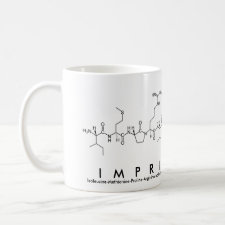
Authors: Morais EC, Correa GG, Brambilla R, Radtke C, Baibich IM, dos Santos JHZ
Article Title: The interaction of encapsulated pharmaceutical drugs with a silica matrix.
Publication date: 2013
Journal: Colloids and Surfaces B: Biointerfaces
Volume: 103
Page numbers: 422-429.
DOI: 10.1016/j.colsurfb.2012.10.059
Abstract: A series of seven drugs, namely, fluoxetine, gentamicin, lidocaine, morphine, nifedipine, paracetamol and tetracycline, were encapsulated. The encapsulated systems were characterized using a series of complementary techniques: Fourier-transform infrared spectroscopy (FT-IR), diffusive reflectance spectroscopy in the UV-vis region (DRS) and X-ray photoelectron spectroscopy (XPS). According to the DRS spectra, most of the encapsulated systems showed a band shift of the maximum absorption when compared with the corresponding bare pharmaceutical. Additionally, after encapsulation, the drugs exhibited infrared band shifts toward higher wavenumbers, which in turn provided insight into potential sites for interaction with the silica framework. The amine group showed a band shift in the spectra of almost all the drugs (except nifedipine and tetracycline). This finding indicates the possibility of a hydrogen bonding interaction between the drug and the silica via electron donation from the amine group to the silica framework. XPS confirmed this interaction between the pharmaceuticals and the silica through the amine group. A correlation was observed between the textural characteristics of the solids and the spectroscopic data, suggesting that the amine groups from the pharmaceuticals were more perturbed upon encapsulation
Template and target information: fluoxetine, gentamicin, lidocaine, morphine, nifedipine, paracetamol, tetracycline
Author keywords: drugs, Xerogel, sol-gel, encapsulation, Vibrational spectroscopy, Electronic spectroscopy



Join the Society for Molecular Imprinting

New items RSS feed
Sign-up for e-mail updates:
Choose between receiving an occasional newsletter or more frequent e-mail alerts.
Click here to go to the sign-up page.
Is your name elemental or peptidic? Enter your name and find out by clicking either of the buttons below!
Other products you may like:
 MIPdatabase
MIPdatabase









